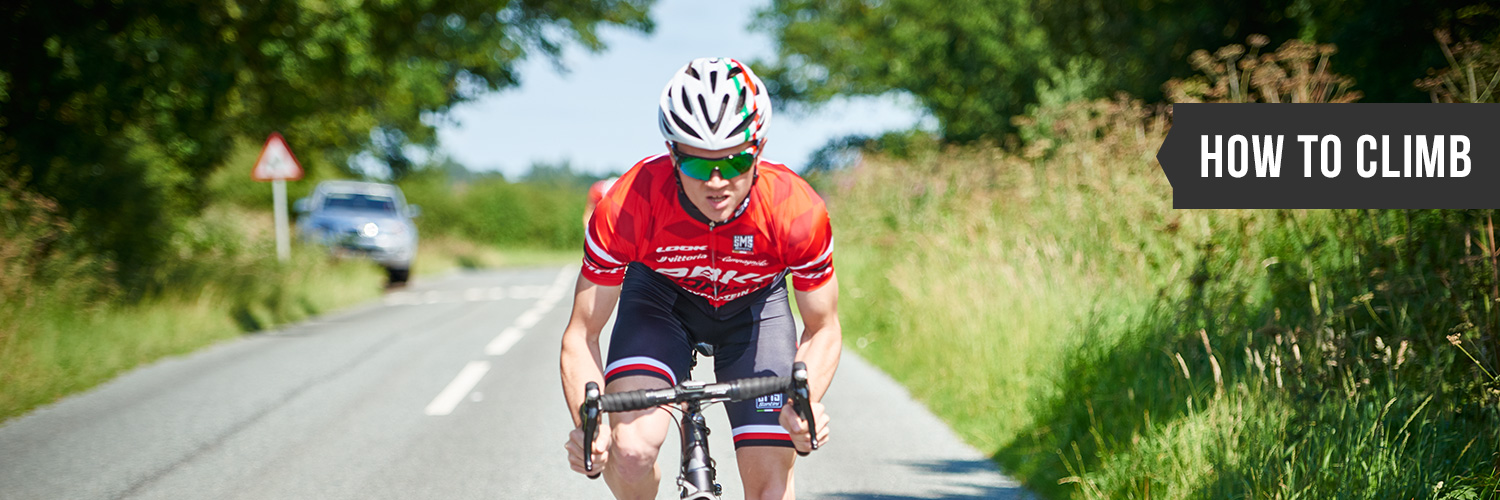Climbing is like Marmite, it’s one of those things you either love or you hate, or are really good at or perhaps not so good. But something we all have to do. You can’t really avoid hills unless you stick to Time Trailing. Granted some riders are naturally better than others at climbing, this could be down to their height or weight or where they live in the country. But climbing is something you can’t avoid if you want to be a good all round bike rider. In this article we are here to help you become a great climber by giving you top tips and advice on how to climb during a race.

Climbing Tips:
-
Set yourself up
First things first, get the right bike set up for hilly courses, small little changes like wider bars can really help in, one, giving you more balance and two, aid in technique, the wider the bars the more ability you have to pull on the bars to help get the power out better. Remember compact chainsets are also key in getting the right gearing, over gearing yourself will only make you work harder and slow your cadence down this fatiguing you more quickly. Depending on the severity of the gradients on the race or sportive take a moment to think about cassette ratio, if there is a substantial amount out climbing at severe gradients then a cassette 12/25 or even 12/27 may be considered. In race situations be clever with wheel choice, deep section wheels are not always the lightest and if windy and hilly it may not be the best option. Light weight clinchers can be much better for climbing than a heavier deep section wheel so bear this in mind when choosing your wheel set up for the day. Again race situations are where you can make a lot of little changes such as carrying less water in your bottles. Yes, you need to stay hydrated but if there is a feed zone or you can have support throughout the race then a bottle can weigh a hefty 600gms. That’s huge when you trying to save 100gms here and there.
-
Lets get Technical
So here is the technical side of things! It’s a good idea if you get chance to preview the climbs, or at least look at the course profile to get some idea of the gradient so you know what to expect. Check the weather forecast too, some climbs can be windy and exposed, so you don’t want to be in the wrong place and taking all the wind for your competitors? So be clever and take shelter where you can.
Once you on the course and getting in the mix ensure you are in the right place, Positioning yourself front of the group at the bottom of the climb is essential so if you fall back you aren’t at the back of the group and hanging in for dear life. Often, attacks and breakaways happen on the crest of the hill or soon after as its a good time to separate the weaker from the strong. So bear this in mind and try and hold something back for if this happens. We know it doesn’t always work this way but try and prepare for this in training and tailor your session based around this. Try picking 4-6 hills on your training ride and making an effort over the top of the hill and 200 yards after.
-
How do I get Faster?
Now if you’re thinking ‘how do I actually get faster at climbing?’ then practice is a good start and pacing yourself and pushing at the right times. In a lot of cases climbs are won and lost nearer the top of the climbs, it’s not the ones that are smashing in at the bottom that will get up the fastest generally. The next question is seated or not seated? This is down to your own style and where you feel most strongest, but as a rule seated efforts will hurt the legs more whilst being out of the saddle will raise your heart rate. Do what feels right for you. The biggest tip we can give you is to learn to love hills! Embrace them and make them become your strongest asset. Good luck and carry on climbing!
Buy all you need from us here at ProBikeKit today!